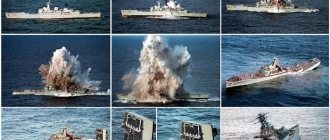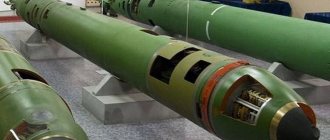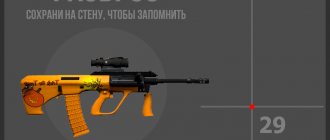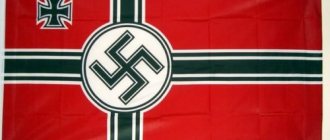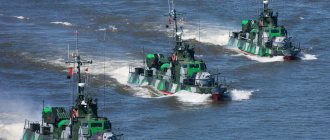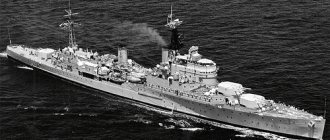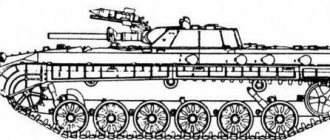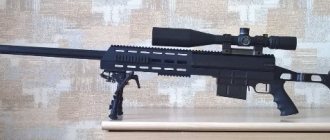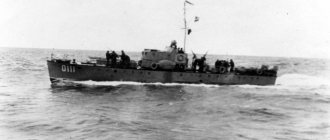Cockpit
The English word "cockpit" appeared in the 16th century and originally meant a cockfighting arena. Later, this name began to be given to the enclosed but open space on a sea vessel where the helmsman was located, probably due to its similar configuration to a cockfighting arena. Subsequently, the term migrated to aviation and the automotive industry, in particular to motorsport. Today, the cockpit has become synonymous with the cockpit.
Oars
Manual window lifter (paddle)
Over time, this jargon began to be forgotten, but just a couple of decades ago there were oars in every car. But not so that they can be used to row them to the shore if the car suddenly falls from the bridge into the river. This is what the handles of mechanical window lifters were called. Although many of today's car enthusiasts have never seen such handles. Cars these days are usually equipped with electric windows, while manual ones can only be found in basic versions of budget models.
Tie
Poker/stirrer
Since we are talking about the gearbox, it is appropriate to remember what the lever of this very gearbox is called in automotive jargon. In common people it is called a poker, for its external resemblance, or a stirrer. The second is more often applied to mechanics, when the lever has to be moved frequently during switching, as if stirring something with a spoon in a cup. You can also often hear about a “handle” or a “stick”.
PS: A whole book could be devoted to automotive jargon - much of everyday life is missing from this post. Therefore, write in the comments what terms confused you at the time and what they meant.
Automotive words that we have forgotten
Initially, the shooting was carried out by ships of mine training squads. Such detachments were created in the Baltic and Black Sea fleets in the early 1870s. Their functions included testing new types of mine and torpedo weapons and training personnel in how to use them. The detachments included ships of various classes. Thus, in 1882, the mine detachment of the Baltic Fleet consisted of the tower frigate Admiral Lazarev, two clippers Zhemchug and Izumrud, the armored tower boat Charodeyka, the destroyer Vzryv and four destroyers. Their torpedo armament was also quite varied: a mine gun (surface torpedo tube) on the frigate, an underwater torpedo tube and two mine guns on the Zhemchug, two mine guns on the Izumrud, one bow tube each on a destroyer (underwater) and torpedo boats ( surface). The presence of compressors on a number of ships made it possible not only to use each torpedo multiple times, but also created conditions for firing in areas remote from Kronstadt.
For each campaign, one of the ships was allocated from the detachment for shooting, as a rule, a destroyer or a torpedo boat. It was given a block on which torpedoes were stored and prepared for action. All torpedoes received from the Obukhovsky and Lessner factories, as well as torpedoes manufactured and repaired by the Kronstadt workshop, were subjected to zeroing.
Until the end of 1881 in the Baltic, all training shooting was carried out on the Eastern Kronstadt roadstead in the direction of Lisiy Nos. However, they were constantly disturbed by passing ships and boats and boats scurrying around the roadstead, so in 1882 they chose a new location - the Bjork roadstead in the Vyborg Bay. There, in the bay near the Koivisto pickaxe (now the city of Primorsk), a new place for shooting torpedoes was determined. For the first time, the destroyer Samopal carried out shooting here. In 45 working days, 188 shots were fired from it, including 149 on the move and 39 on the foot. In total, during the 1882 campaign, the ships of the Mine Training Detachment fired torpedoes 600 times. Another 96 shots were fired by destroyers assigned to the detachment.
Over the next three years, the organization of torpedo shooting in the Baltic Fleet did not change. It was carried out by one of the destroyers, the commander of which was appointed for the current campaign as the head of the sighting station. In 1883, a specially equipped Ladoga block shed was included in the station. Now torpedoes could not only be stored and prepared for firing here, but also undergo simple repairs.
Shooting was carried out in a similar way on the Black Sea. The Mine Training Detachment there in 1883 included the cruiser Memory of Mercury and five destroyers. The sighting was carried out in the Sevastopol Bay, and training torpedo firing by the detachment’s ships was carried out in the Feodosia roadstead and in the Dnieper estuary near Ochakov. In total, in 1883, the Black Sea detachment fired 698 shots, including 182 sighting shots.
The annual formation of sighting stations at the expense of the staff of training detachments not only led to personnel turnover, which reduced their professional level, but also created difficulties in implementing campaign plans. In this regard, the command of the detachments and specialists - mine officers - have repeatedly raised the issue of creating permanent sighting stations.
This issue became especially acute in the mid-1880s, when the production of domestic torpedoes increased sharply, one of the mine officers wrote in his report.
Sighting station on Lake Kopanskoe
The progress of torpedo weapons also placed increased demands on their development, and on June 12, 1885, by order of the Navy Ministry, the first “permanent station for testing and shooting mines” was created in the Kronstadt Military Harbor. It was housed in a building that was specially built on the northern wall of the Military Harbor. Part of it hung over the water and rested on cast iron piles driven into the bottom of the harbor. The structure had an open opening in which two torpedo tubes were located - for underwater and surface firing, as well as a lattice for launching torpedoes by self-exit. The rest of the coastal part of the building was intended for preparing torpedoes.
The firing line ran along the harbor wall. Initially, it was simply fenced off with buoys, but the boats and boats scurrying around the harbor paid little attention to them. Therefore, they soon had to be replaced with booms with a metal net. Shields with light nets stretched over them were installed across the firing line at distances of 600, 1200 and 1800 feet (183, 366 and 549 m). Near the shields on the rafts there were sailors - “waving”; they indicated the moment of passage of the torpedo with the signal of the flag. The speed of the torpedo was calculated from these signals. The accuracy of the movement was assessed by the holes made in the nets.
The Kronstadt sighting station began operating on June 5, 1886. Until the end of navigation, 34 torpedoes passed through it, 15 of which were accepted by the fleet. To do this, 530 shots had to be fired. Firing torpedoes at a specially equipped station significantly improved the quality of their acceptance. As its first head, Lieutenant A.P. Enakhovich, noted, such shortcomings of torpedoes began to emerge that he had never been able to detect when firing from a destroyer, “having fired 500 shots in two campaigns.”
Overpass to the sighting station
In 1887, shooting at the station was already in full swing. According to the agreement with the plant, for each torpedo the manufacturer contributed part of its cost to the treasury. In case of non-compliance with the contractual conditions, the torpedo could be immediately returned to the factory. However, as a rule, they were in no hurry to do this. Specialists from the station with great persistence worked to bring each torpedo they shot to a state that allowed it to be accepted. For example, when a torpedo was deflected in depth or direction, it was carefully weighed in a special bath, its buoyancy, roll, trim were measured, the steering gears were adjusted, the rudder angles were selected, etc. For a long time, only the hydrostat with a pendulum mechanism remained untouched, preserving what had already come from Fiuma. They took a more harsh approach to torpedoes that did not meet speed requirements. They were usually returned to the factory after five to seven unsuccessful shots. In total, in 1887, 79 torpedoes passed through the station, 51 of which were received by the fleet. Of the total number of shots fired during the year - 1906 - the latter accounted for 1288.
In Sevastopol, the first permanent sighting station began operating in 1887. It was created on the basis of the old steamship "Brestovets". It was equipped with “two launch grids that dropped two feet (0.61 m) below the bottom, a large “air injection pump,” machine tools and other equipment. A destroyer was attached to the station for firing from the surface vehicle. The mooring place for both vessels was determined in Kilen Bay. From here towards Holland (the area on the North side) the firing line ran. During the first year of its existence, the Sevastopol station fired 24 torpedoes. To do this, 466 shots had to be fired. The coastal sighting station appeared in the Black Sea Fleet only in 1898. Its buildings were erected on the southern shore of the Northern Bay not far from the anchorage site of the former station. Due to the increased range of the torpedoes, it was only necessary to slightly reorient the firing line. Now it passed towards Sukharnaya Balka.
Internal view of the sighting station
Overdrive
Overdrive is an overdrive gear with a gear ratio below one. Once upon a time, this term implied the use of an additional gearbox in a gearbox. Today this is the designation for the highest level in an automatic transmission. However, this term is becoming increasingly rare. The last time I saw the O/D (Overdrive) button was next to the selector of the Jatco four-speed automatic transmission, which is installed on Datsun cars. When pressed, the highest fourth gear was disabled.
Poker/stirrer
Kenguryatnik
A kenguryatnik is a tubular structure that is hung in front or behind the car to protect body elements and optics from mechanical damage. Once upon a time, American farmers attached gates to their pickup trucks to disperse livestock. The Russian-language version of the term “kenguryatnik” or “kengurin” came from Australia, where similar designs “roo bar” (literally translated “kangaroo bars”) were hung by truckers to protect the vehicle from animals crossing the road. In particular, from the kangaroo, common in Australia. Today, the kenguryatnik has turned into a fashion accessory and is more often used for decorative purposes and for tuning. As a result of the struggle for the safety of pedestrians, amendments were made to the “Technical Regulations on the Safety of Wheeled Vehicles” that greatly limit the use of such a design.
